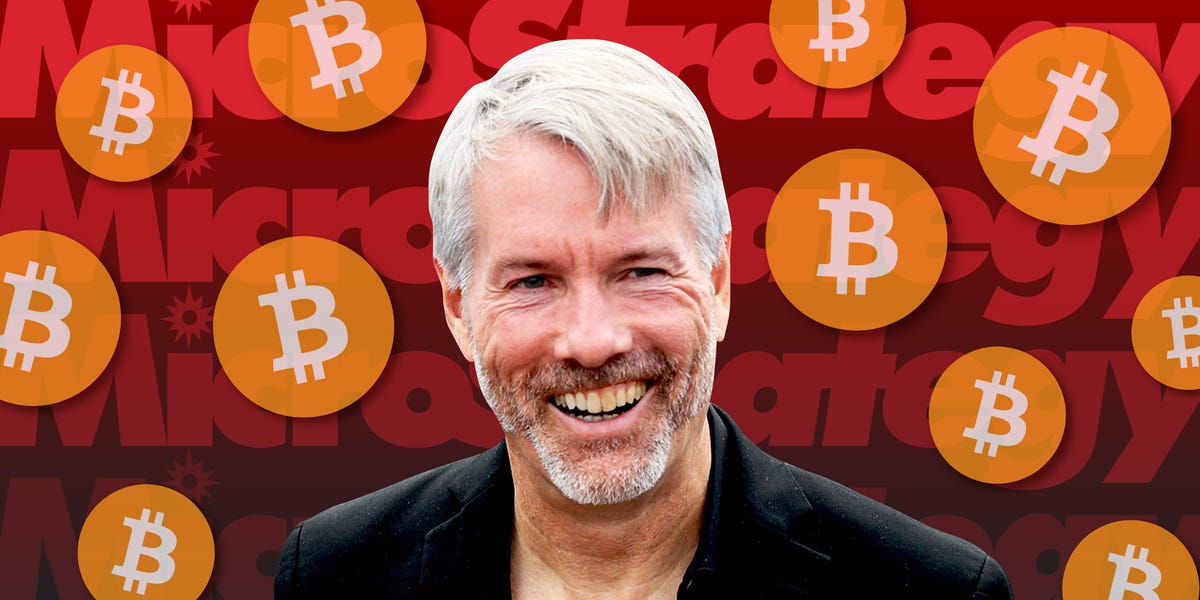Michael Saylor Backs Bitcoin as U.S. Crypto Reserve, Questions Altcoin Role
06.03.2025 13:18 2 min. read Kosta Gushterov
The U.S. government’s decision to add Bitcoin and other cryptocurrencies to its strategic reserves has sparked debate, with MicroStrategy’s Michael Saylor weighing in on the matter.
While he supports Bitcoin’s inclusion, he remains cautious about altcoins like XRP, Ethereum, Solana, and Cardano, emphasizing the need for regulatory oversight.
In a recent interview, Saylor addressed concerns over altcoin regulation, stating that XRP and similar assets should operate within a clear legal framework. However, he remains firm in his belief that Bitcoin should be the primary digital reserve asset, suggesting that the broader crypto market may not be as suited for long-term government holdings.
The upcoming White House Crypto Summit is expected to clarify the administration’s approach to digital assets. Saylor revealed that a working group, including policymakers and industry leaders, will oversee the reserve strategy over the next six months. He also stressed that building Bitcoin reserves should be a measured process, ensuring transparency and regulatory clarity. Additionally, he highlighted the role of stablecoins in maintaining the dollar’s dominance and the growing relevance of tokenized assets.
Cardano’s absence from official discussions has raised questions about whether it will be excluded from the reserves. Some industry figures, including Gemini’s Tyler Winklevoss, argue that Bitcoin is the only asset suitable for this role, dismissing XRP, Solana, and Cardano as unfit for a strategic reserve.
As speculation builds, more details are expected at the summit. Meanwhile, Trump’s DeFi venture, World Liberty Financial, has made a major move by acquiring $20 million in Bitcoin and Ethereum, signaling confidence in the market ahead of key policy decisions.
-
1
Ethereum Core Developer Launches Foundation to Push ETH to $10,000
03.07.2025 20:00 2 min. read -
2
First-Ever Staked Crypto ETF Set to Launch in the U.S. This Week
01.07.2025 9:00 2 min. read -
3
XRP Price Prediction: Price Compression and Higher ETF Approval Odds Could Propel XRP to $4
01.07.2025 20:03 3 min. read -
4
LINK Stuck Below $15 as Whales Accumulate and Retail Stalls, CryptoQuant Reports
03.07.2025 19:00 2 min. read -
5
Crypto Inflows hit $1B Last Week as Ethereum Outshines Bitcoin in Investor Sentiment
07.07.2025 20:30 2 min. read
XRP Hits All-time High Amid Regulatory Breakthrough and Whale Surge
XRP officially entered uncharted price territory on July 18, surging past its previous record to hit a new all-time high of $3.64, fueled by a powerful combination of U.S. regulatory progress, technical breakouts, and heavy whale accumulation.
BlackRock Moves to Add Staking to iShares Ethereum ETF Following SEC Greenlight
BlackRock is seeking to enhance its iShares Ethereum Trust (ticker: ETHA) by incorporating staking features, according to a new filing with the U.S. Securities and Exchange Commission (SEC) submitted Thursday.
IMF Disputes El Salvador’s Bitcoin Purchases, Cites Asset Consolidation
A new report from the International Monetary Fund (IMF) suggests that El Salvador’s recent Bitcoin accumulation may not stem from ongoing purchases, but rather from a reshuffling of assets across government-controlled wallets.
Ethereum Sparks Altcoin Season as FOMO Shifts Away From Bitcoin
Traders are rapidly shifting their focus to Ethereum and altcoins after Bitcoin’s recent all-time high triggered widespread retail FOMO.
-
1
Ethereum Core Developer Launches Foundation to Push ETH to $10,000
03.07.2025 20:00 2 min. read -
2
First-Ever Staked Crypto ETF Set to Launch in the U.S. This Week
01.07.2025 9:00 2 min. read -
3
XRP Price Prediction: Price Compression and Higher ETF Approval Odds Could Propel XRP to $4
01.07.2025 20:03 3 min. read -
4
LINK Stuck Below $15 as Whales Accumulate and Retail Stalls, CryptoQuant Reports
03.07.2025 19:00 2 min. read -
5
Crypto Inflows hit $1B Last Week as Ethereum Outshines Bitcoin in Investor Sentiment
07.07.2025 20:30 2 min. read


